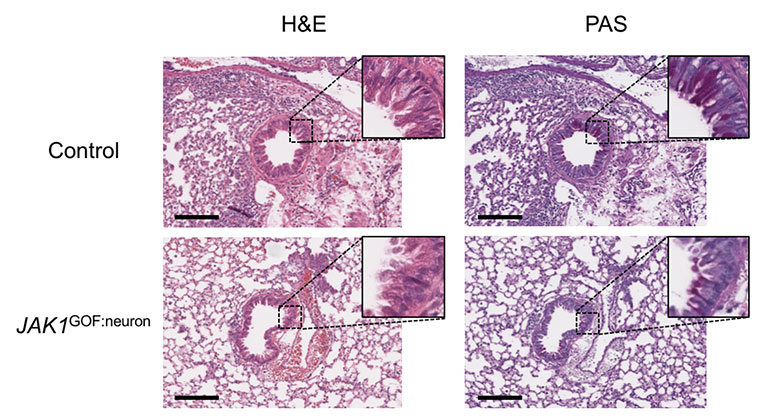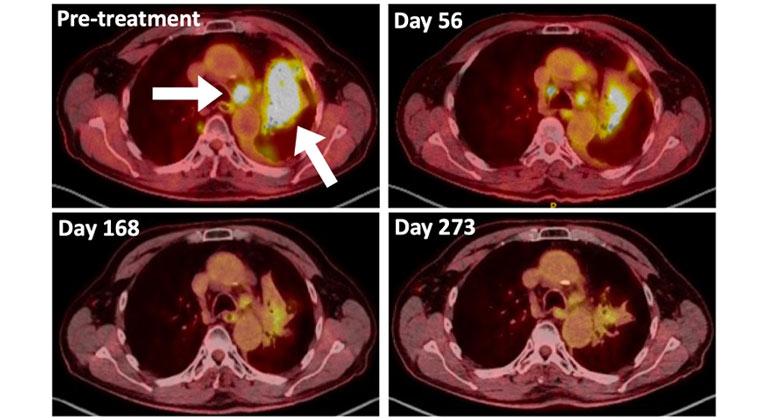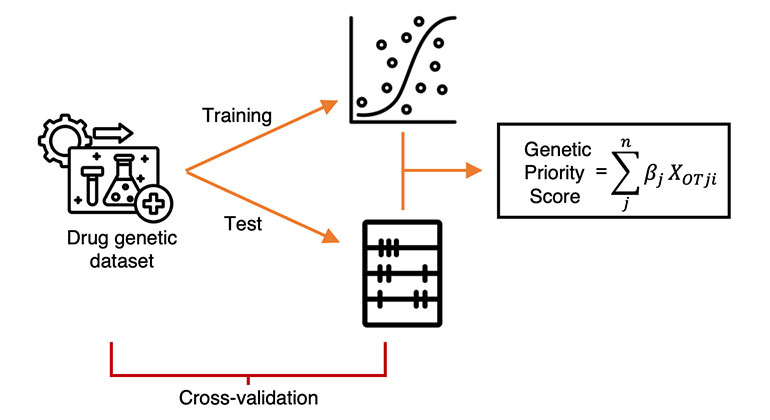Novel Drug Candidate Regenerates Pancreatic Cells Lost in Diabetes
In a screen of more than 100,000 potential drugs, only one, harmine, drove human insulin-producing beta cells to multiply, according to a study led by researchers at the Icahn School of Medicine at Mount Sinai, funded by JDRF and the National Institutes of Health, and published online today in Nature Medicine.
In a screen of more than 100,000 potential drugs, only one, harmine, drove human insulin-producing beta cells to multiply, according to a study led by researchers at the Icahn School of Medicine at Mount Sinai, funded by JDRF and the National Institutes of Health, and published online today in Nature Medicine.
Diabetes results from too few insulin-producing “beta cells” in the pancreas secreting too little insulin, the hormone required to keep blood sugar levels in the normal range. The disease affects 380 million people worldwide, and leads to major medical complications: heart attack, stroke, kidney failure, blindness and limb amputation.
The Mount Sinai study found that harmine drove the sustained division and multiplication of adult human beta cells in culture, a feat that had eluded the field for years. In addition, harmine treatment tripled the number of beta cells and led to better control of blood sugar in three groups of mice engineered to mimic human diabetes.
“Our results provide a large body of evidence demonstrating that the harmine drug class can make human beta cells proliferate at levels that may be relevant for diabetes treatment,” said senior study author Andrew Stewart, MD, Director of the Diabetes, Obesity and Metabolism Institute at the Icahn School of Medicine. “While we still have a lot of work to do in improving the specificity and potency of the harmine and related compounds, we believe these results represent a key step toward more effective future treatment of diabetes.”
Loss of insulin-producing beta cells has long been recognized as a cause of Type 1 diabetes, in which the immune system mistakenly attacks and destroys beta cells. In recent years, researchers have concluded that a deficiency of functioning beta cells also contributes importantly to Type 2 diabetes. Thus, developing drugs that can increase the numbers of healthy beta cells is a major priority in diabetes research.
Re-Creating a Burst
As humans develop, each cell divides into two, leading to many more cells in subsequent generations as organs form. In the case of beta cells in the pancreas, most of this multiplication comes in a burst during the first year of life and then declines during childhood, leaving a limited supply to last a lifetime. During this burst, about two percent of a child’s beta cells are dividing at any one time. The current study found that harmine re-creates roughly the same amount of beta cell division, both in cell and animal tests.
While increasing the supply of beta cells seems an obvious approach, past attempts to do so have been met with limited success. Perhaps as a result of their unique genetic program, adult beta cells strongly resist attempts to nudge them into cell division.
Over several years, Dr. Stewart and colleagues unraveled genes and signaling pathways that drive multiplication (proliferation) of beta cells, and then confirmed proposed mechanisms with gene therapy. Based on the current study results, the team believes a particular enzyme, “dual specificity tyrosine-regulated kinase-1a (DYRK1A),” is the likely target of harmine. With this discovery, DYRK1A, known from past studies to drive cell division in other cell types, becomes a drug development target.
“We found that harmine, likely by interacting with DYRK1A, increases levels of other known drivers of cell division,” said Peng Wang, PhD, Assistant Professor of Medicine, Endocrinology, Diabetes, and Bone Disease at the Icahn School of Medicine and first author of the paper. “These drivers include the protein c-MYC, the gene for which was the basis of the screen we used to identify harmine as a potential treatment.”
Dr. Wang said the team designed a sensor to glow (thanks to a firefly gene) when any compound activated the promoter DNA snippet responsible for turning on the c-MYC gene. Of more than 100,000 compounds analyzed in a high-speed robotic screen, harmine was among 86 that caused the brightest glow, and was the only one of these that caused beta cell proliferation. The c-MYC pathway appeared to some researchers to be an unlikely therapeutic target for beta cell regeneration because past studies had found it to cause beta cell death when activated in high doses. However, the current study found that harmine causes only modest increases in c-MYC levels, and no beta cell death.
The research team will now focus on making changes to the harmine and its relatives (harmalogs) to find drug candidates that target only beta cells.
Harmine is derived from a flowering plant called Harmal (peganum Harmala) found in the Middle East, and from some South American vines. Drug development efforts based on harmine will need to grapple with its known psychoactive effects on the brain, which may explain its traditional use in spiritual ceremonies and as medicine.
The study was funded by grants from JDRF, the leading research and advocacy organization funding type 1 diabetes research (17-2011-598 and 1-2011-603).
“We believe that beta cell regeneration will play a key role in ultimately curing type 1 diabetes, and JDRF is pleased to support Dr. Stewart’s research into renewing these cells in humans,” said Patricia Kilian, PhD, director of the JDRF Regeneration Research Program. “If successful, this early research could lead to drugs that restore beta cells in people with type 1 diabetes, realizing the vision of a future free from insulin therapy.”
Also providing vital support for the study were grants from the National Institute of Diabetes and Digestive and Kidney Diseases, part of the National Institutes of Health (R-01 DK55023, U-01 DK089538, R-01 DK065149, R-01 DK067351 and R-01 DK077096) and the American Diabetes Association (1-14- BS-059).
Also making key research contributions from the Diabetes, Obesity and Metabolism Institute were Juan-Carlos Alvarez-Perez, PhD, Hongtao Liu, BA, Aaron Bender BS, and Anil Kumar, PhD, Donald K. Scott, PhD, and Adolfo Garcia-Ocaña, PhD. In addition, Dan P. Felsenfeld, PhD, Sharmila Sivendran, PhD, Roberto Sanchez, PhD, of the Experimental Therapeutics Institute and The Integrated Screening Core within the Icahn School of Medicine, provided expertise that made drug screening efforts possible. Also important was support from the Mindich Child Health and Development Institute at Mount Sinai.
About the Mount Sinai Health System
Mount Sinai Health System is one of the largest academic medical systems in the New York metro area, with more than 43,000 employees working across eight hospitals, over 400 outpatient practices, nearly 300 labs, a school of nursing, and a leading school of medicine and graduate education. Mount Sinai advances health for all people, everywhere, by taking on the most complex health care challenges of our time — discovering and applying new scientific learning and knowledge; developing safer, more effective treatments; educating the next generation of medical leaders and innovators; and supporting local communities by delivering high-quality care to all who need it.
Through the integration of its hospitals, labs, and schools, Mount Sinai offers comprehensive health care solutions from birth through geriatrics, leveraging innovative approaches such as artificial intelligence and informatics while keeping patients’ medical and emotional needs at the center of all treatment. The Health System includes approximately 7,300 primary and specialty care physicians; 13 joint-venture outpatient surgery centers throughout the five boroughs of New York City, Westchester, Long Island, and Florida; and more than 30 affiliated community health centers. We are consistently ranked by U.S. News & World Report's Best Hospitals, receiving high "Honor Roll" status, and are highly ranked: No. 1 in Geriatrics and top 20 in Cardiology/Heart Surgery, Diabetes/Endocrinology, Gastroenterology/GI Surgery, Neurology/Neurosurgery, Orthopedics, Pulmonology/Lung Surgery, Rehabilitation, and Urology. New York Eye and Ear Infirmary of Mount Sinai is ranked No. 12 in Ophthalmology. U.S. News & World Report’s “Best Children’s Hospitals” ranks Mount Sinai Kravis Children's Hospital among the country’s best in several pediatric specialties.
For more information, visit https://www.mountsinai.org or find Mount Sinai on Facebook, Twitter and YouTube.

AI-Driven Study Redefines Right Heart Health Assessment With Novel Predictive Model
Jan 04, 2024 View All Press Releases
Demystifying a Key Receptor in Substance Use and Neuropsychiatric Disorders
Jan 02, 2024 View All Press Releases
New Insights Revealed On Tissue-Dependent Roles of JAK Signaling in Inflammation
Dec 21, 2023 View All Press Releases
A Type of Allergy Medicine Might Help Treat Lung Cancer, Research Suggests
Dec 06, 2023 View All Press Releases




